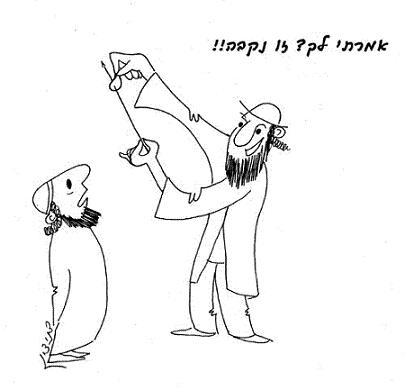
According to the laws of the Torah a woman who has given birth to a male is impure for seven days and the couple are forbidden sexual relations. Afterwards, for 33 days, they are permitted sexual relations even if the woman gets her period during this time, for the blood is considered blood of purity. If she gave birth to a female the couple are forbidden sexual relations for two weeks and afterwards they are permitted for 66 days, even if the woman gets her period during this time. It is written: “If a woman has conceived and borne a male child, then she shall be unclean seven days…She shall then continue in the blood of her purification thirty-three days…But if she bears a female child, then she shall be unclean two weeks, as in her customary impurity, and she shall continue in the blood of her purification sixty-six days” (Leviticus 12:2-5).
Our sages ruled that even if she miscarries she is considered to have given birth; if she miscarries a male she is as one who has given birth to a male, and if she miscarries a female she is as one who has given birth to a female.
Miscarriage is considered as giving birth only if she miscarried at least 40 days into her pregnancy, for then the fetus begins to take on human form; the head is large as though it were created from the head, the two eyes are far from each other as the eyes of a fly, the nostrils are close to each other, and the mouth is a hair’s breadth slit. Its sexual organ is the size of a lentil. If the fetus is female, the sexual organ resembles a length-wise barley seed. The limbs and the legs are indistinct. A woman who miscarries must check the fetus to see if its form matches the above description. How does one check? One takes oil and gently cleans the fetus, looking at it in the sunlight to see if it matches the above description. If the fetus had yet to reach that stage of development it was miscarried before 40 days and the mother is not subject to the laws of one who has given birth. If the limbs are formed as described above, she is considered as one who has given birth. One still must check whether the fetus was male or female: one takes a splinter of wood which is not sharp and attempts to push it into the space where the sexual organ would be. If it cannot penetrate the fetus was male, and if it does, the fetus was female. Rav Nachman added that the examination by splinter must be done up and down, for that is where the female’s slit would be, but not right and left, lest the labia block the splinter. They also added that if the location of the sexual organ looks like a split grain of barley, the fetus was female. One of the scholars asked: Perhaps the image of the split grain of barley is the testicles of a male, for testicles are also divided by a hair’s breadth line, creating the image of a split grain of barley? The scholar Abaye answered him that in a miscarried male fetus one does not see the testicles, much less the line dividing the testicles.
One of the sages, Samuel, instructed his colleague Rav Judah not to rely on the above examination to conclusively determine if 40 days had passed since impregnation; he should not consider the woman as having given birth and allowed to her husband even if she bleeds unless the fetus had sprouted hair. The scholars asked: Samuel was so expert in this examination that once a man came to him with a miscarried fetus and Samuel ruled with certainty that the fetus was 41 days old. According to Samuel’s calculations, the man had had relations with his wife while she was subject to niddah impurity. Samuel tied the man up until he admitted that Samuel was right and that he had had relations with his wife before she had immersed in the ritual bath. This shows that Samuel was expert in the forms of the fetus, so why did he ask his colleague Rav Judah not to rely on this examination unless hairs had sprouted? Answer: Samuel was expert, but others were not.
(Babylonian Talmud, Tractate Niddah 25a-b)
